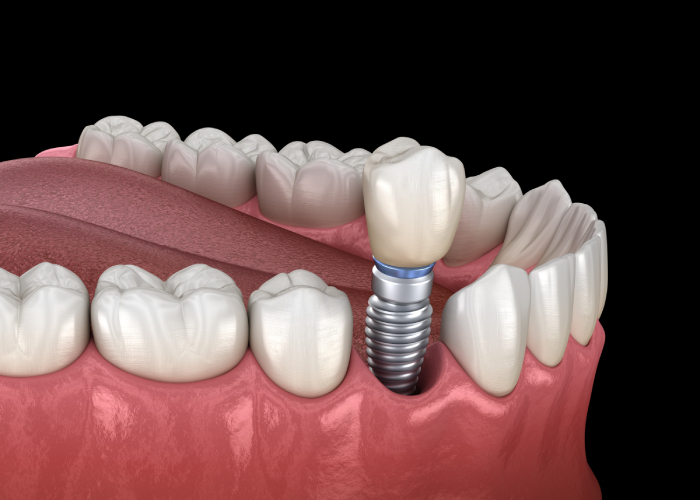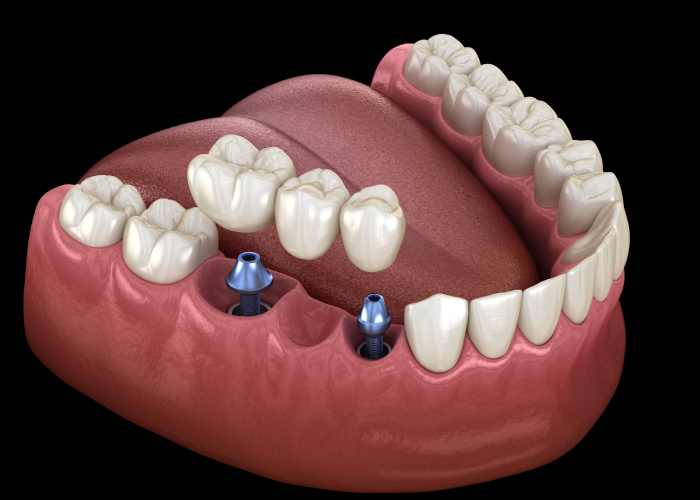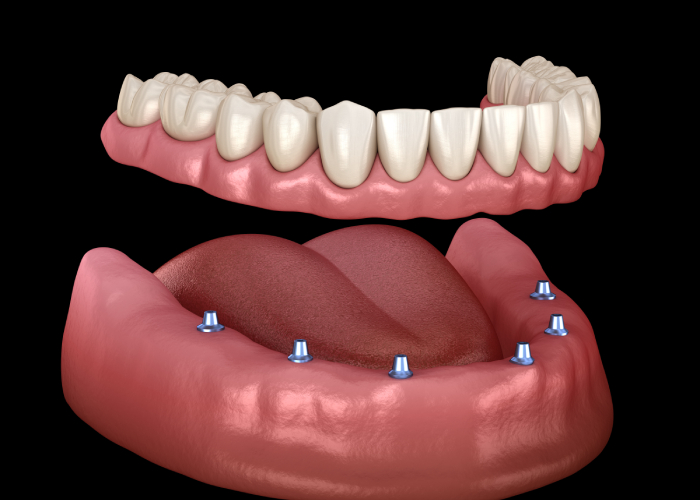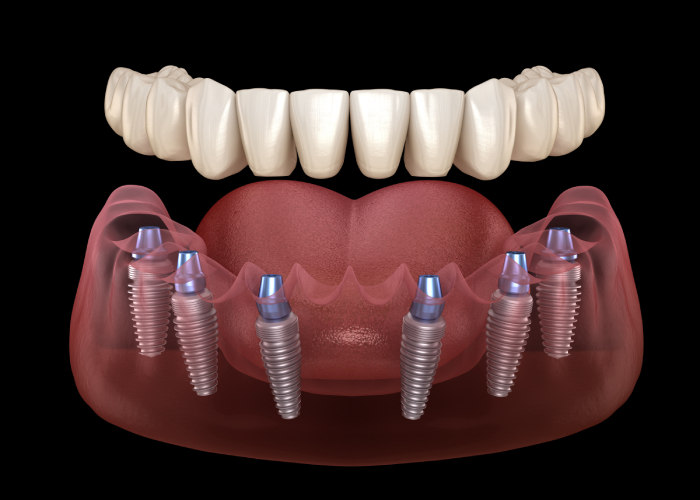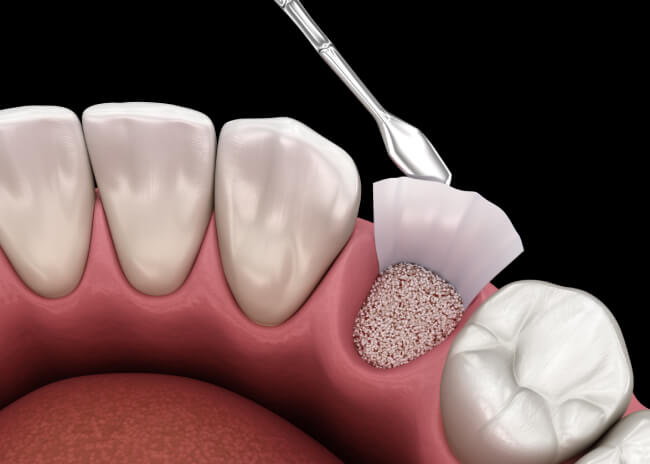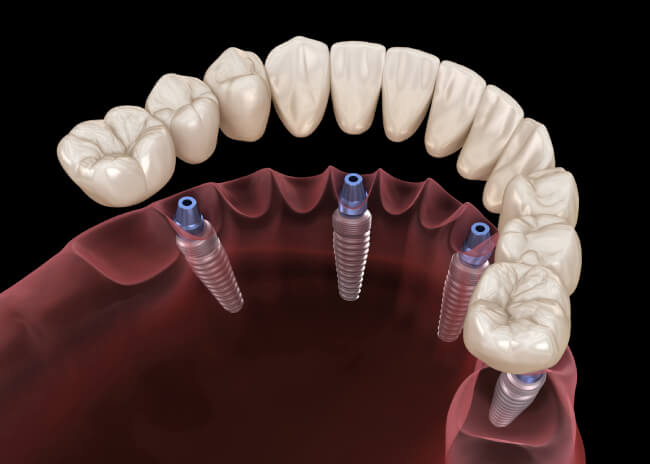
Summer Special
Dental Implant
Starting As Low As $199 A Month
All-on-4® Dental Implants
Starting As Low As $499 A Month
Affordable Payment Plans
Are you ready to restore your smile?
Natural, long-lasting, efficient, and comfortable Call For More Information About Dental Implants
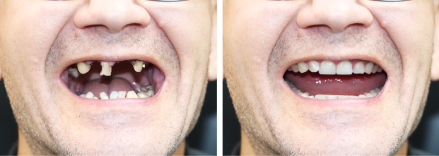
Are you a candidate for dental implants?
If you have one or more missing teeth in your oral cavity, you may consider dental implants as a treatment option. With technological advancement, dental implants are undoubtedly the best replacement for missing teeth. Most people with good dental hygiene and bone integrity are considered perfect candidates for dental implants. However, some factors must be evaluated to determine your candidacy for this treatment.
- Endosteal Implants
- Subperiosteal Implants
- All-on-4 Dental Implants
- Implant Overdentures
- Implant Supported Bridges
What makes you an ideal candidate for dental implants?
Before considering dental implants as a suitable treatment, your dentist will evaluate some factors to decide whether it will be a good option for the long term. Complete evaluation of your teeth, gums, jaws, and overall health will be required to predict the prognosis of a dental implant.

Proper dental hygiene
People with good oral hygiene are considered the best candidates for dental implants. Oral hygiene maintenance ensures a low risk of infection or gum diseases post-treatment. If you have dental cavities, bleeding gums, or any other oral disease, it is best to get it treated first before implantation.

Adequate jaw strength and supporting tissues
Dental implants are inserted in your jawbone and observed for a few months to allow bone integration. Healthy jaw bones and sufficient supportive tissues are necessary to form a good foundation for dental implants. Even if you have some degree of bone loss, it is still beneficial to opt for dental implants because they prevent further loss of bone structure. Those with severe bone loss may require a bone graft to provide stability.

Age and overall health
Dental implants require jaw strength and bone integrity, so they are not recommended for younger adults who haven’t had all their teeth erupted. Getting dental implants after 18 or until your jaw has fully grown is suggested. Other health factors that can diminish your candidacy potential for dental implants include uncontrolled diabetes, alcoholism, cancer, and radiation to the head and neck area. People who take immunosuppressant drugs or medications are also not qualified to be ideal candidates for this treatment.

Non-smoker
Smoking can disrupt the integration of the bone with a dental implant and prevent normal healing. It can increase the risk an implant failure. If you are a smoker, it is recommended to quit before opting for dental implants. Lack of commitment to quitting smoking after the placement of an implant can affect the overall prognosis.

Willing for a long-term commitment
The placement of dental implants is not a quick procedure. After the placement of an implant, it may take six to eight months in an ideal situation for osseointegration and gum healing. In some cases, it may take even longer than a year. Therefore if you opt for dental implants, you must commit to the guidelines given by your dentist throughout this whole process.
If you want to ensure whether you qualify for a dental implant treatment, consult with your dentist.
Different types of implants treatments
When you are going for dental implants to replace missing tooth/teeth, it is necessary to consider which treatment option will be best suited for you. Generally, there are four different types of dental implants, depending on the number of teeth to be replaced and other relevant factors.
Which type of implant should you get?
After thoroughly examining your case, your dentist can guide you about the best dental implant option. The decision is made based on multiple factors. A single implant is best suited if you are missing only one tooth. If you are missing more than one tooth in an arch, bridges or implant-supported dentures can be considered. Removable implant-supported dentures or All 4-6 implant-retained dentures are preferred treatment options for full arch replacement.
Dental Implants
Dental implants have been the gold standard for replacing missing or damaged teeth for decades. They resemble natural teeth in structure and provide greater functional ease than conventional tooth replacement options. To understand how dental implants work, we must learn about their different components along with their respective roles.
A dental implant has three main components: the implant post, abutment, and prosthetic. These components are further divided into subtypes that vary according to their constitution and function. Each of these components will be discussed in detail below.
Implant Post
- An implant post, also known as a fixture, is a screw-like component that replaces the root portion of a natural tooth. It is cylindrical and tapers towards the bottom to match the anatomy of a natural tooth root. Most implant posts are threaded, i.e., they have a screw-like structure that provides a greater surface area to integrate with the bone and increased rigidity.
- Implant posts are made out of titanium, a biocompatible material that is not harmful to the surrounding living tissues. In certain cases, these implant posts are coated with a material known as hydroxyapatite, which promotes the fusion of the implant with the surrounding bone structure.
- Dental implant posts are available in varying lengths and diameters. It depends on the size and width of the tooth to be replaced. For example, if an incisor is being replaced, it will require a narrow implant post resembling an incisor’s thin root. Similarly, if a molar is to be replaced, it will require a wide implant post to compensate for the multiple roots of a molar tooth. The length of implant posts also varies. They can have a length of up to 18mm. Mini dental implants usually have a longer length to provide better strength and stability. Most implant posts are hollow inside, so an abutment can be screwed on top later.
- An implant post is inserted into the jaw bone during a surgical procedure. Once it has been placed successfully, it is allowed to fuse with the surrounding bone tissues through a process known as osseointegration. This process takes 4 to 6 months before moving toward the next step in dental implant treatment.
Implant Abutments
- An implant abutment is a small metal piece that connects the implant post with the prosthetic. The abutment’s lower part is designed to screw into the hollow portion of an implant post. The upper part can be of different shapes to adhere to the dental prosthetic.
- There are multiple variations of abutments depending on the type of prosthetic they need to support. The abutment for a single crown or bridge resembles a tiny tooth sticking out of the gum line. It is different from abutments used for implant-supported dentures. These abutments have special attachments that allow the denture to clip onto them. This way, the denture can be removed with ease when required.
- Most abutments are inserted upright, but they can also be placed at a different angle to follow the natural curvature of an arch. Your dentist decides the placement time of an abutment based on your case. The abutment may already be attached to the implant post in certain cases. These implants have two-piece units, meaning that the implant post and abutment are fused to form a single unit. In other scenarios, the abutment is placed after successful osseointegration of the implant post has occurred.
Implant Prosthetic
An implant prosthetic refers to the visible component of a dental implant that has the closest resemblance to a natural tooth. It can be of different types, depending on the number of teeth to be replaced. The three common types of implant prosthetics are discussed as follows.
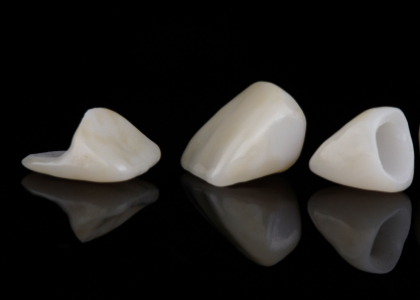
Crown
A dental crown is placed on top of an abutment to replace a single tooth or multiple missing teeth that are not present adjacent to one another. Dental crowns are typically made of ceramic, PFM (porcelain fused to metal), or zirconia. These crowns are either cemented directly or screwed onto the abutment. The contours and shade of a crown closely resemble that of a natural tooth.
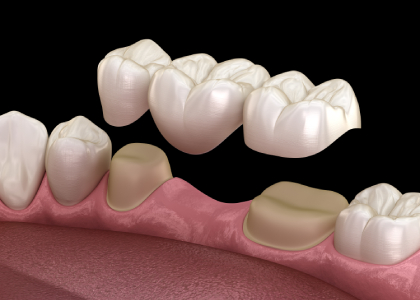
Bridge
A dental bridge replaces two or more missing teeth that are adjacent to one another. They can be used to replace 2 to 4 teeth in an arch. The units of teeth to be replaced by a bridge are fused. For example, if you have three missing teeth in a row, two implant posts will be placed on either side, and a 3 unit bridge will be placed on top. In some cases, a single implant post can support a 2 unit prosthetic to replace two adjacent missing teeth.
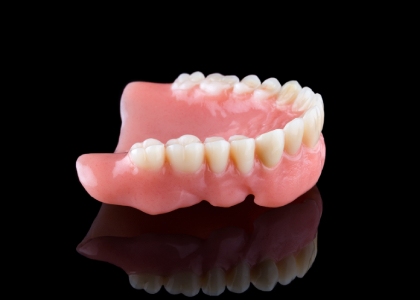
Denture
Dentures replace an entire arch or full jaw of missing teeth. People who have lost all their teeth can get both upper and lower dentures. Generally, two types of dentures are placed using implants; implant-supported and implant-retained. The main difference between the two is that implant-supported dentures are removable, while implant-retained dentures are fixed. Both have pros and cons, and your dentist decides the best option for your case.
Implant-supported dentures are connected to the implant posts using special abutments. These abutments allow the denture to clip on and off with ease. This way, the denture can be cleaned after removal and snapped back on when required. On the other hand, fixed dentures provide more strength and rigidity. The dentures are designed to resemble the color and contour of natural teeth. They are also attached to an acrylic base that mimics the color of natural gums.
A dental prosthetic can be attached to the abutment using dental cement or screwed over the abutment. The type of prosthetic you choose will also influence the number of implant posts to be placed in your jawbone. To replace a full arch, your dentist may recommend an All on 4 or All on 6 implant system for better retention.
Dental Implant Procedure
Dental implants are inserted in your jaws through minor surgery. The placement of a dental implant has several steps and can take about 8 to 12 months to complete. If you decide to get one or more dental implants, keep in mind that you will have to commit to a long process for the best prognosis. Some advanced dental clinics also offer one-stage implant surgery in which an implant post, abutment, and a temporary prosthetic are placed all at once. This type of surgery helps to save time but has its risks. For this reason, most dentists perform conventional implant surgery for optimum results.
Preparation
Before beginning the process of dental implant surgery, you will need to follow some preparatory steps. These steps are necessary to decide which type of implant will be best for you and how long the procedure will take. The prognosis of the implant surgery can also be predicted based on detailed clinical and radiological examination.

Consultation
The first step is to set up a consultation with a prosthodontist or a dentist specializing in implant placement. The dentist will evaluate your case and determine if you are a candidate for implant surgery.

Examination
A detailed clinical and radiological analysis is done before finalizing an implant surgery. Your doctor will perform a comprehensive clinical examination to assess the condition of your teeth, gums, and jaw bones. Your medical history is also required to make sure that there are no conditions that may lead to implant failure. Dental X-rays and 3D images are taken for better assessment. CT scans are also required to evaluate the condition of your jaw bones and determine the location of nerves and sinuses.

Treatment Plan
Based on the condition of your teeth and surrounding tissues, a treatment plan is devised that satisfies your needs. If you have severely damaged teeth that cannot be salvaged, they will need to be extracted before considering implant placement. People with severe bone loss will need a bone grafting procedure before implant surgery.
Bone Grafting
Dental implants require sufficient bone to hold them in place and be able to withstand the forces of mastication. In many cases of missing teeth, bone loss occurs naturally over time. If a tooth or multiple teeth have been missing for too long, the surrounding bone structure loses its density. Loss of bone makes it difficult to place an implant because it requires adequate bone density for better support.
If dental X-rays and CT scans indicate that you do not have sufficient bone in your jaws to hold an implant, your dentist will discuss multiple options of bone grafting or bone augmentation.
There are different methods of bone grafting that can be used to build up your jawbone. Bone graft material can be obtained from natural sources, such as taking a graft from other regions of your body (jaw, chin, hip, etc.), or artificial sources, such as hydroxyapatite or calcium phosphate. Bone graft is added to the area of your jaw where the implants are to be placed. The time required to achieve optimum bone density can vary from 4 to 12 months. Once the needed density has been attained, you will proceed toward dental implant surgery.
Dental Implant Surgery
The conventional method of dental implant surgery requires three or more visits, depending on the severity of your case. The process will be done under local anesthesia if you have a single tooth or a few teeth missing. Sedation or general anesthesia may be suggested to replace a full arch or jaw of missing teeth. Your dentist will guide you about the best option to minimize pain and discomfort during surgery.
After successful anesthesia, a small cut is made on the top of your gum tissues to expose the underlying bone. This incision is necessary because it allows access to the bone where the implant is to be placed.
After exposing the bone, a machine is used to drill a hole directly into the bone. The hole’s width and length depend on the size of the implant to be inserted. The hole can also be made at an angle in certain cases of implant-supported dentures.
The implant post is inserted into the hole drilled into your jawbone. After completing this process, the incision on the gums is sutured and allowed to heal before the next step.
Once the implant post has been inserted, the process of osseointegration ensues. In this process, the bone grows around the implant and fuses with its surface to provide support and rigidity. The healing period can take 4 to 6 months. Special care is required in this period to avoid infection at the implant site. You will need to follow the post-op instructions given by your dentist. After this period, a fresh cut is made on the gums to expose the implant. A healing cap or collar is placed to stimulate the surrounding gum tissues healing.
A few weeks after the placement of the healing cap, it is removed, and an abutment is placed that connects the implant post with the prosthetic to be attached on top. It is a minor surgery and can be done under local anesthesia. The gums are closed around the abutment but do not fully cover it. The top part is left visible, which links to the prosthetic.
Impressions are taken of the areas where the abutment has been placed. These impressions are sent to a laboratory where the dental prosthetic is designed to match your natural teeth. Whether you are getting a crown, bridge, or denture, the required dental prosthetic is cemented or screwed atop the abutment. In the case of removable implant-supported dentures, the prosthetic is clipped onto the abutments, which can be removed when necessary.
With continuous research and advancement in implant dentistry, newer materials and techniques have been made that require a much shorter period. One of these techniques is the use of two-piece implants in which the implant post comes pre-attached with an abutment. A temporary prosthetic can be placed on top to replace your natural teeth quickly. These techniques save time but carry increased risks of failure compared to conventional dental implant surgery.
Post-operative Instructions
The completion of implant surgery is followed by post-operative care that ensures the stability of an implant. Whether you get the traditional implant surgery or the one-stage process, you may experience slight discomfort and other symptoms after the surgery. These symptoms may include pain at the implant site, swelling of the surrounding gum tissues, minor bleeding from gums, and facial swelling. These symptoms are normal and can be resolved by medicines. Your dentist may prescribe painkillers and antibiotics to avoid these symptoms.
It is recommended to have a soft diet for 1 to 2 weeks after implant surgery. This precaution will allow the implant to stabilize your jawbone and prevent further pain or discomfort. Once these symptoms have faded, you can gradually add other food items to your diet. Oral hygiene maintenance is critical because a lack of oral hygiene may lead to implant failure. Regular brushing and flossing should be done. Interdental brushes can be used around the implant for better cleaning.
Smoking is strictly prohibited during and after the implant procedure. Intake of tooth-staining products like caffeine and tobacco should be diminished. Visit your dentist for follow-up appointments to prevent any complications.
Root Canal vs. Dental Implants: Which Is the Best Option for You?
If you have a tooth or multiple teeth that are grossly carious, there are two options of treatment to follow. Depending on your clinical situation, Your dentist may recommend a root canal treatment (RCT) or a dental implant to fix the problem. Each of these treatment options has its pros and cons. The best option for you will be decided based on your clinical examination, radiographic readings, and the condition of the remaining teeth in your mouth.
What is a Root Canal Treatment?
A root canal is a dental treatment in which the pulp part of your tooth is removed and replaced with a sealing agent. A healthy tooth has a pulp that contains all the nerves and vessels that sustain a tooth structure. The bacteria can extend to the pulpal region and affect the nerves if a tooth gets carious or infected. Such a condition can cause severe pain and discomfort. For this reason, a root canal is suggested to extract the damaged pulp tissue.
Whether your tooth gets infected or injured, root canal treatment can be done to save the remaining tooth structure. After extraction of damaged pulpal tissue, the canal inside your tooth’s root is thoroughly cleaned and sealed later. The process is completed by placing a filling or a dental crown to restore the appearance and function of a natural tooth.
Benefits of Root Canal Treatment
Root canal treatment has multiple benefits that are discussed as follows:
- You get to retain your natural tooth: The main advantage of a root canal is that you do not have to lose your tooth. If you have lost some of the tooth structure, it can be replaced with the help of a filling or a crown.
- Nearly pain-free procedure: Root canal treatment is done under local anesthesia to minimize pain and discomfort. The pain becomes even less after the extraction of the pulpal tissue.
- The procedure is less invasive: Root canal treatment is less invasive and does not require any surgical incision. It only needs the opening of the damaged tooth to expose the pulp tissues.
- It is more affordable: In terms of finances, a root canal is more affordable than a dental implant. Although the treatment may be expensive, it costs fairly less than an implant.
- Fewer follow-up appointments are required: Root canal can be done in a single sitting, but more complex cases require 3 to 4 visits. However, the gap between each appointment is less, and the procedure is completed within 2 to 3 weeks or a month at most.
Drawbacks of a Root Canal Treatment
Despite its benefits, this treatment also has some disadvantages that need to be considered beforehand.
- Your tooth may be too damaged already: Root canal treatment is not suggested for teeth that have lost a sufficient amount of their structure because of trauma or dental caries. The prognosis of such teeth is difficult to predict. In such cases, a root canal won’t be able to salvage your teeth.
- It weakens the tooth structure: Without the addition of a crown, your tooth becomes slightly weaker after a root canal treatment. It may not be able to sustain the forces of mastication (chewing or eating). This factor can increase the tendency of brittleness or cracks.
- Risk of complications that may lead to tooth loss: While a root canal is a safe procedure to preserve your natural tooth, a few risks stay. In rare cases of infections or post-treatment complications, you may have to lose your entire tooth.
What are Dental Implants?
Dental implants have been considered the gold standard of teeth replacement for decades. If you have lost a tooth or it has been damaged beyond repair, the best option is to replace that tooth with a dental implant. It resembles a natural tooth in structure and provides good functional stability.
Teeth that a root canal treatment cannot salvage are referred for extraction, followed by replacement with a dental implant. It is inserted in your jawbone through minor surgery. This procedure is done under local, sedation or general anesthesia. Once an implant post is placed (that mimics the root portion of a natural tooth), it is allowed to fuse with the surrounding bone for a few months. Later, an abutment adheres on top, which gets covered with a dental crown, bridge, or denture.
Benefits of a Dental Implant
Below discussed are the reasons that make dental implants a better option than a root canal:
- Improved functioning: A highly carious tooth treated with a root canal would be weaker and more prone to cracks. Comparatively, the overall functionality is restored if it gets replaced with a dental implant. Dental implants are sturdy and function just as efficiently as healthy teeth.
- Less chewing or eating problems: Dental implants allow you to eat or chew regular food items with ease. You will not have to face the risks of brittleness or cracks, as might be the case with root-canal-treated teeth. Dental implants also provide more comfort during speech than alternative measures of teeth replacement.
- Reduced bone loss: When a tooth is too damaged or missing, the bone surrounding that tooth structure also depletes over time. Replacement with a dental implant restores your jawbone integrity. It also helps to maintain your facial features that can otherwise get affected if your teeth are missing.
- Decreased risk of gum diseases: Once a damaged or missing tooth is replaced with a dental implant, the risk of gum disease is also lowered. It can be maintained by following proper oral hygiene measures.
- Dental implants last longer: Dental implants might be a better option than a root canal if you want a long-term solution for your severely damaged or missing teeth. A good dental implant can last for decades if it is taken care of. With a root canal, you may still face some issues a few years later, or your crown may need to get replaced after 5 or 10 years.
Drawbacks of a Dental Implant
If you opt for a dental implant treatment, it is better to consider the following drawbacks beforehand:
- They are often not covered by insurance: Replacing your natural tooth with a dental implant is expensive, and it is often excluded in most dental insurance plans. This can make it harder for people to afford dental implants. However, there are affordable payment plans available at most dental clinics to counter this issue.
- You should be an ideal candidate: It will be decided beforehand whether you qualify for a dental implant. Some conditions, such as extensive bone loss, uncontrolled diabetes, or cancer, can make it difficult for you to be a suitable candidate for dental implants.
- Lengthy procedure with a longer recovery period: The traditional process of getting a dental implant can take about 6 to 10 months or longer, depending on your case. After the first implant surgery, it will take 4 to 6 months for proper healing and fusion of the implant with the surrounding bone before moving toward the next step. More advanced options are also available that require much less time, but they have their own risks.
Takeaway
The ultimate decision of whether you need root canal treatment or dental implants will be finalized by your dentist. Multiple factors are considered before picking a suitable option, such as clinical assessment, radiological findings, presence of sufficient bone, etc. The future prognosis of both options is also evaluated based on these factors. If you are the right candidate for both, your dentist will allow you to make a better choice based on your budget and time availability.
A dental implant is a better long-term option if your tooth is severely damaged or missing and you can afford a high-cost procedure. On the other hand, if you want treatment on a lower budget and wish to reserve your natural tooth, you can opt for a root canal. Your dentist will guide you about the pros and cons of both options to help you make a better decision.


